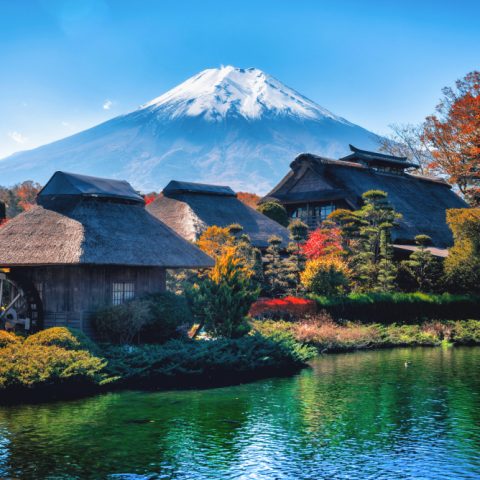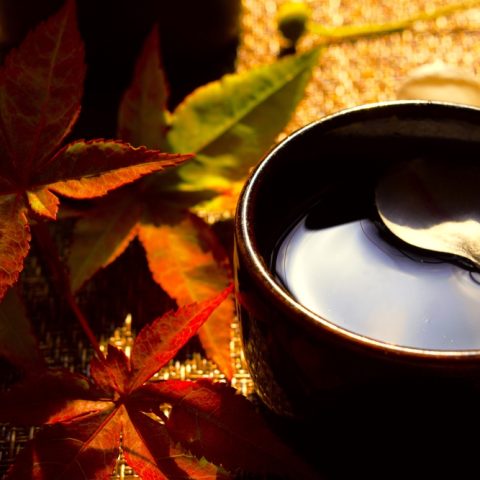
Autumn 秋 (aki) is the season that brings forth trees painted in the colours of red, yellow and orange. The foliage creates picturesque sights for your viewing whilst you stroll about, enjoying the cooler weather of the season before winter sets in. A symbol of the beginning of the fall season is kuri 栗 (chestnuts), which are sweet, starchy seeds encased in green-brown husks.
A staple of the Japanese fall season, kuri have been around for centuries, dating as far back as the Jomon period (10,000-200 B.C.) However, it wasn’t until the 11th century that chestnuts began to be commercially cultivated, primarily growing in Ehime, Ibaraki, Kumamoto and Nagano prefecture.
There are many ways that the Japanese people enjoy this nutty treat, so let’s take a look.

Roasted Chestnuts
Try it Simple…
Yakikuri 焼き栗 (roasted chestnuts) are arguably the signature flavour of autumn. Considered to be the most simple, traditional and iconic way to eat chestnuts, there is nothing better than stopping by a local street vendor to grab a piping bag of yakikuri. During this chilly season, it will surely warm you up while you take a stroll and enjoy the scenic beauty of autumn.

Photo courtesy Namiko Chen from Justonecookbook
Another traditional way?
Have you ever heard of kuri-gohan 栗ご飯? Yes, it’s exactly what you are thinking – chestnuts on rice! This dish comprises two of the most important harvests of the autumn season. Rice (considered to be the essence of Japanese culture as it is consumed almost every day) combined with chestnuts is a sign that autumn has begun. Boiled chestnuts (which allow for easy peeling) are cooked together with rice and essential ingredients such as sake, salt, and sugar to make this delicious and aromatic dish.

Photo courtesy Naoko Kurosaki @naodolce1104 on Instagram
Before we go further, let’s understand the basics.
To make any delicious chestnut goody, we need to make the foundation of the dessert. Kuri no kanroni 栗の甘露煮 is a chestnut compote. In other words, it refers to chestnuts in heavy syrup, or candied chestnuts. It takes a lot of time and effort to prepare this special Japanese treat. The laborious preparation and simmering process gives kuri no kanroni its beautiful, deep mustard-colour. It can be served on its own, with red bean paste, or used in making desserts such as Mont Blanc.

Photo courtesy Hiro @lapincake_1219 on Instagram
Desserts anyone?
Japan is well known for its french patisseries and amazing sweet treats. In 1933, monburan モンブラン (Mont Blanc Cake) was introduced to Japan. With an indulgent sponge cake as the base and topped with layers of cream, this famous dessert is then covered with chestnut puree piped around in a spaghetti-like fashion, and topped off with a candied chestnut. For anyone with a sweet tooth, this is a stunning dessert that is perfect to indulge in during the autumn season.
Wagashi in Japan
If you have a sweet tooth, get ready to read about delicious wagashi 和菓子 (traditional Japanese confections), which reflects Japan’s delicacy culture. Wagashi took off during the Edo period (1603-1868) after continuous sugar trading between Japan and China. Wagashi is usually served alongside green tea since the slight bitterness of the drink nicely balances the sweetness of the treat. It is no surprise that the Japanese took chestnuts a step further by incorporating it into making delicious wagashi treats.

Kuri Dango in Mitarashi syrup – Photo courtesy 鳴子温泉 名湯の宿 鳴子ホテル @naruko_hotel on Instagram
Everyone loves dango, the chewy rice dumpling made from sweet mochiko rice flour, and kuri dango 栗団子 is one of the many variations. 3-4 boiled dumplings are skewered on a stick and covered with a delicious chestnut puree. Another version of kuri dango involves serving chestnut-filled dumplings covered with mitarashi syrup in a small bowl.

Kuri Youkan
Kuri Youkan
If you are a fan of jellied desserts (like myself), you’d definitely want to try kuri-youkan 栗ようかん (chestnut jelly). To make kuri-youkan, agar-agar, smooth red bean paste, and chestnuts are combined together and left to chill. Once chilled, it is cut into blocks. How cute are they!

Photo courtesy @sasa_savitra on Instagram
Kuri manju 栗饅頭 is a seasonal variation of manju (Japanese steamed cake). This baked pastry is usually brushed with egg yolk before being baked to resemble the brown colour of chestnuts. In just one bite, you can dive right into the middle of the pastry, which is filled with a delicious sweet bean and chestnut paste that melts in your mouth!

Kuri Kinton
If you are well aware of Japan’s seasonal products, you would know that their sweet potatoes are also popular in autumn. Known as satsumaimo さつまいも, they are bright yellow with a sweet taste. Satsumaimo is used alongside chestnuts to make kuri kinton 金団 (chestnut gold mash).
Kuri kinton is a symbolic food to eat during the New Year celebration since it represents good wealth and fortune. The combination of candied chestnuts and mashed sweet potato results in a delicious seasonal treat.
Now we must have snacks!
I believe everyone loves snacks, in whatever shape or form! Japan never misses the chance to release seasonal flavoured snacks, and there are many chestnut flavoured goodies out there for you to munch on.

Photos courtesy Sugoi Mart @sugoimart on Instagram, Collage created by Sarah
Take a look at these charming Kikoman cookies, candies, and chocolates which incorporate chestnuts. Kit Kat also produces amazing seasonal flavours such as ‘chestnut’ and ‘mont blanc’.
In fact, there are a great deal of chestnut flavoured snacks out there, such as mini chestnut dorayaki, caramel corn, mochi, and ice-cream. For a simpler treat, you could just crack open a bag of sweet chestnuts!
And don’t forget drinks!
Chestnuts in Japan have even ventured off into drinks! Yes, it is true! The Japanese have adapted this nutty flavour into many beverages for their seasonal enjoyment. From chestnut flavoured soy milk to chestnut roasted green tea, you can even find chestnut flavoured brews and beers.
If you wander around the streets of Tokyo or other cities in Japan, you can find many well-decorated cafes with a cosy ambience, where you can enjoy a warm cup of chestnut flavoured teas, coffee or lattes to revive your soul during the cold autumn season.

Photo courtesy Tiffany Zhang @tinyhangrytiff on Instagram
Even if your nearest Starbucks is a long train ride away, there is no need to worry! You can still enjoy these seasonal chestnut flavoured beverages at your nearest conbini (convenience stores) to satisfy your autumn cravings.
Before writing this blog, I thought the only way that the Japanese enjoyed chestnuts was in the form of yakikuri. But now, we can see that they have taken the simple chestnut and created a variety of foods, with many more that are left to discover and enjoy! Which treat made your mouth water while reading this blog?
Featuring photo credit: Roberto Patti on Unsplash




